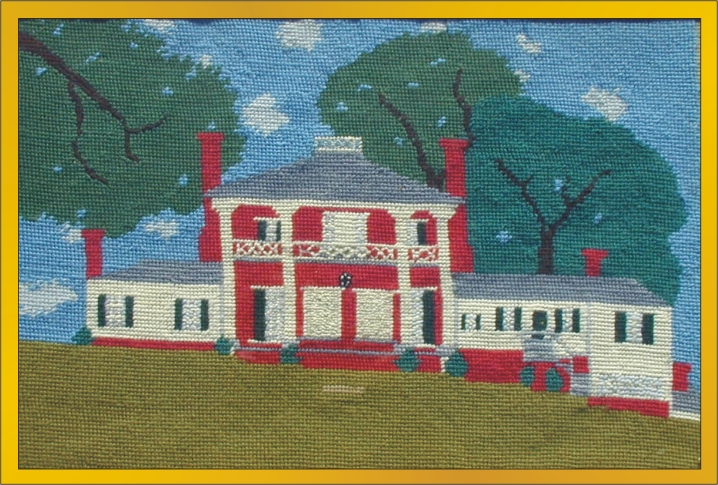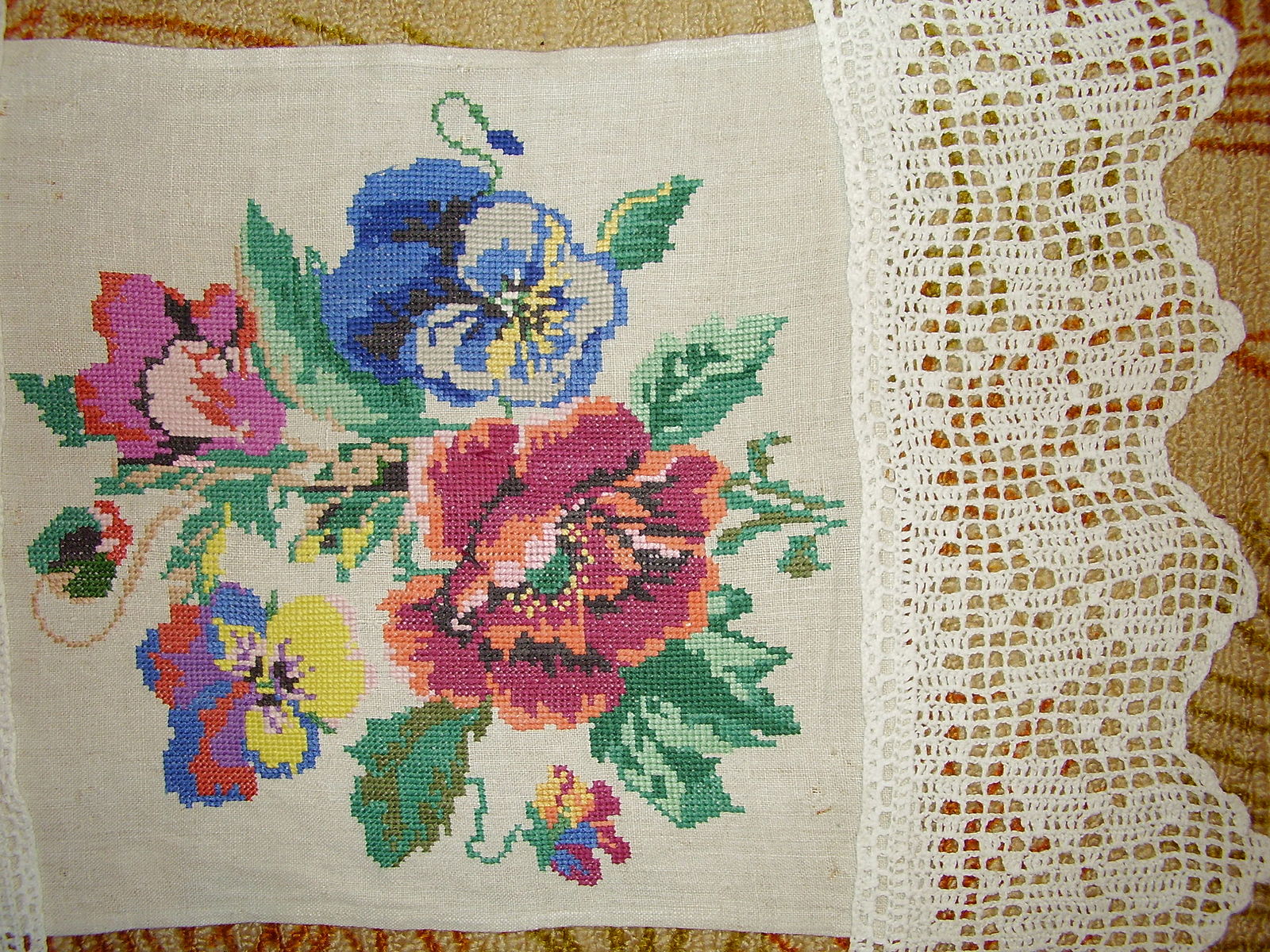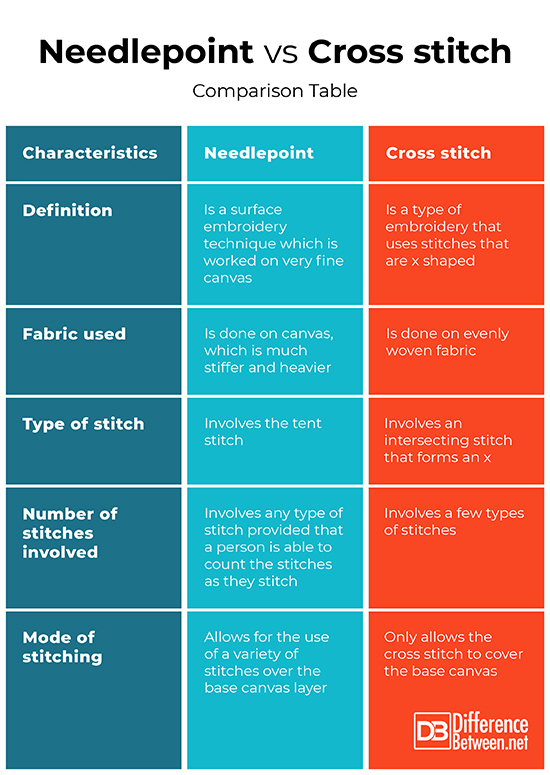Difference Between Needlepoint and Cross Stitch
In the recent past, there has been a rising popularity in crafts done with a cloth, thread and a needle. These crafts have evolved with time.
Embroidery is deemed therapeutic and is said to be good for the brain, protecting the brain from pre-mature aging, while also helping ease disorders such as anxiety and depression. It also helps express and improve creativity.
While needlework is basically a craft that uses a needle and colored floss or yarn to stitch, there are different styles and ways of doing it. Some of these are cross stitch, embroidery, plastic canvas, and needlepoint, just to name a few.

What is a Needlepoint?
This is a surface embroidery technique, which dates back to the ancient Egyptians, and is worked on very fine canvas. It is mostly done with yarn, but a different look may be achieved by using strands of embroidery floss. It is however stitched by hand, as opposed to being woven on a loom. This method also allows for the use of a variety of stitches over the base canvas layer.
It is widely used to decorate accessories such as belts, purses, jewelry and also wall hangings. An important note to consider in needlepoint is that the more holes per square inch, the more time consuming and detailed fabric designs are.
There are several types of needlepoint stitch which include;
-
Continental stitch
-This is either done horizontally or vertically across a fabric and is sturdier.
-
Basketweave stitch
– This is used over large areas and is created in diagonal rows.
-
Half cross tent stitch
– This is a tent stitch that is worked horizontally or vertically across the fabric.
-
Cushion stitches
– This is made of five diagonal stitches whereby the longest stitch is in the middle and is followed by the shorter stitches.
-
Mosaic stitches
– Involves three stitches whereby the longer one is surrounded by two shorter ones.
-
Gobelin stitches
– This is a stitch that involves a slanting diagonal stitch which is worked over two horizontal threads and one vertical thread.
-
Parisian stitch
– Involves creating a basketweave pattern with shorter parallel stitches.

What is Cross stitch?
This is a type of embroidery that uses stitches that are x shaped.
Materials commonly used are floss, canvas or linen cloth, and is mostly used for creating pictures for framing.
It involves;
-
Partial stitches
– These are used for shaping and texture
-
Back stitches
– Used for creating small details and outlines.
Similarities between Needlepoint and Cross stitch
- Both can be done using the same kind of charts
- Both are hand embroidery techniques
- Both use delicate fabrics such as cotton, canvas, and weavers cloth
Differences between Needlepoint and Cross stitch
-
Definition of Needlepoint and Cross stitch
Needlepoint is a surface embroidery technique which is worked on very fine canvas. Cross stitch, on the other hand, is a type of embroidery that uses stitches that are x shaped.
-
Fabric used in Needlepoint and Cross stitch
Needlepoint is done on canvas, which is much stiffer and heavier, and whereby there is more hole than fabric, on the other hand, cross stitch is done on evenly woven fabric.
-
Type of stitch
While needlepoint involves the tent stitch, cross stitch involves an intersecting stitch that forms an x.
-
Number of stitches involved
Needlepoint involves any type of stitch provided that a person is able to count the stitches as they stitch. Cross stitch, on the other hand, involves a few types of stitches.
-
Mode of stitching
While needlepoint allows for the use of a variety of stitches over the base canvas layer, cross stitch only allows the cross stitch to cover the base canvas.
Needlepoint vs. Cross stitch: Comparison Table

Summary of Needlepoint vs. Cross Stitch
Embroidery has been termed as the perfect way to unwind. Both needlepoint and cross stitch has been used since time immemorial, with cross stitch being the oldest form of embroidery. It is, however, important to note that cross stitching is more appealing for a beginner. However, any of the two methods can be used to create different patterns, depending on a person’s preference.
- Difference Between Profit Center and Investment Center - July 2, 2022
- Difference Between Anti-Trust and Anti-Competition - June 6, 2022
- Difference Between Stocktaking and Stock Control - June 6, 2022
Search DifferenceBetween.net :
 Email This Post
: If you like this article or our site. Please spread the word. Share it with your friends/family.
Email This Post
: If you like this article or our site. Please spread the word. Share it with your friends/family.
1 Comment
Leave a Response
References :
[0]Folk Eileen. Needlework Designs for Miniature Projects: 64 Charts for Counted Cross-Stitch and Needlepoint. Courier Corporation Publishers, 2011. https://books.google.co.ke/books?id=TQIeAwAAQBAJ&printsec=frontcover&dq=Difference+between+needlepoint+and+cross+stitch&hl=en&sa=X&ved=0ahUKEwjNrvCGnIbfAhUUuHEKHa05A_wQ6AEILjAB#v=onepage&q=Difference%20between%20needlepoint%20and%20cross%20stitch&f=false
[1]Wyszynski Linda. The Complete Photo Guide to Needlework. Creative Publishing international, 2012. https://books.google.co.ke/books?id=vqnNUm9K0pMC&printsec=frontcover&dq=Difference+between+needlepoint+and+cross+stitch&hl=en&sa=X&ved=0ahUKEwiUguj8nIbfAhX3QxUIHV-pCSs4ChDoAQhLMAg#v=onepage&q=Difference%20between%20needlepoint%20and%20cross%20stitch&f=false
[2]Davidson J. & Singh D. How to Teach Yourself Cross Stitch With DIY Projects from Beginner to Expert. Mendon Cottage Books Publishers, 2017. https://books.google.co.ke/books?id=p7CUDgAAQBAJ&printsec=frontcover&dq=Difference+between+needlepoint+and+cross+stitch&hl=en&sa=X&ved=0ahUKEwiUguj8nIbfAhX3QxUIHV-pCSs4ChDoAQhRMAk#v=onepage&q=Difference%20between%20needlepoint%20and%20cross%20stitch&f=false
[3]Image credit: https://commons.wikimedia.org/wiki/File:Bolling_Island_Needlepoint.jpg
[4]Image credit: https://commons.wikimedia.org/wiki/File:Cross-stitch.jpg


Where can I find a needle point kit that uses mulitipule stitches?